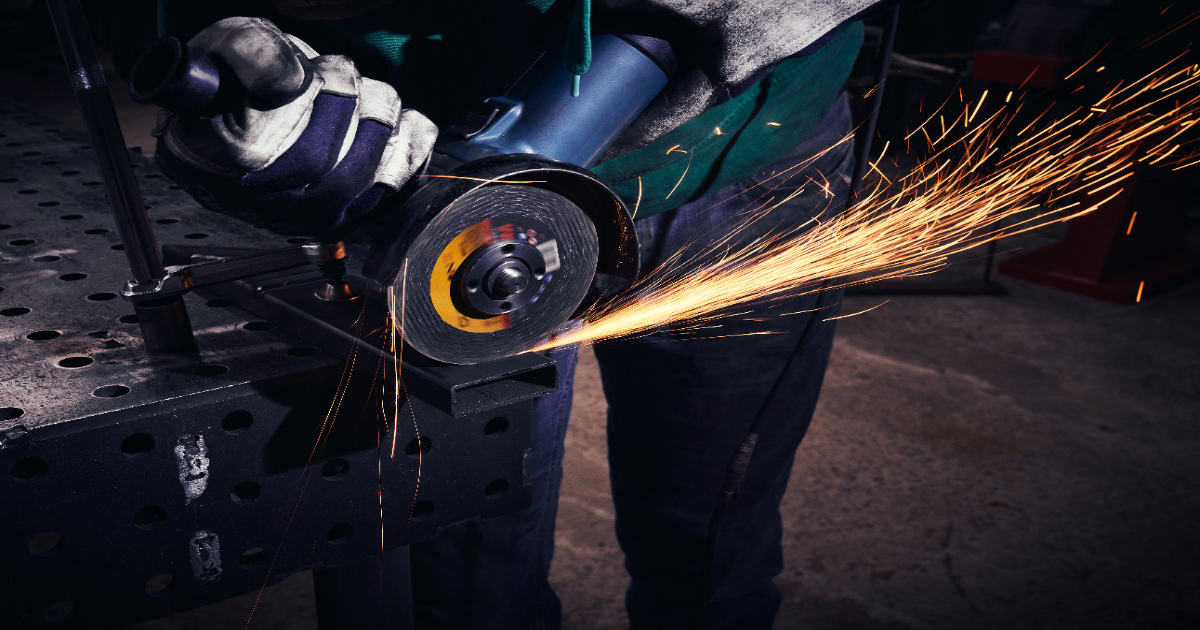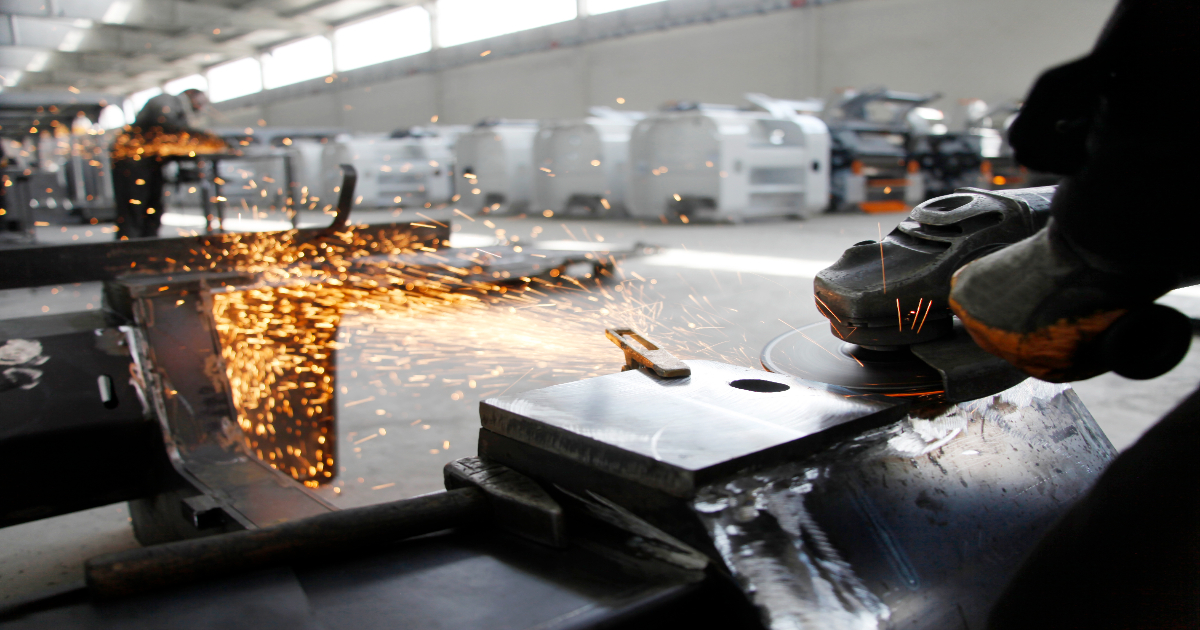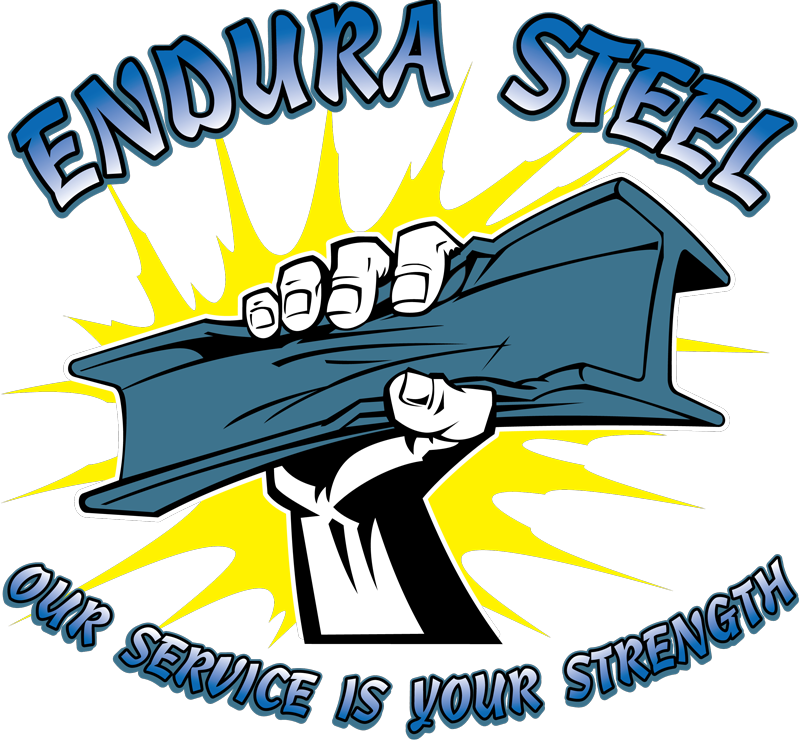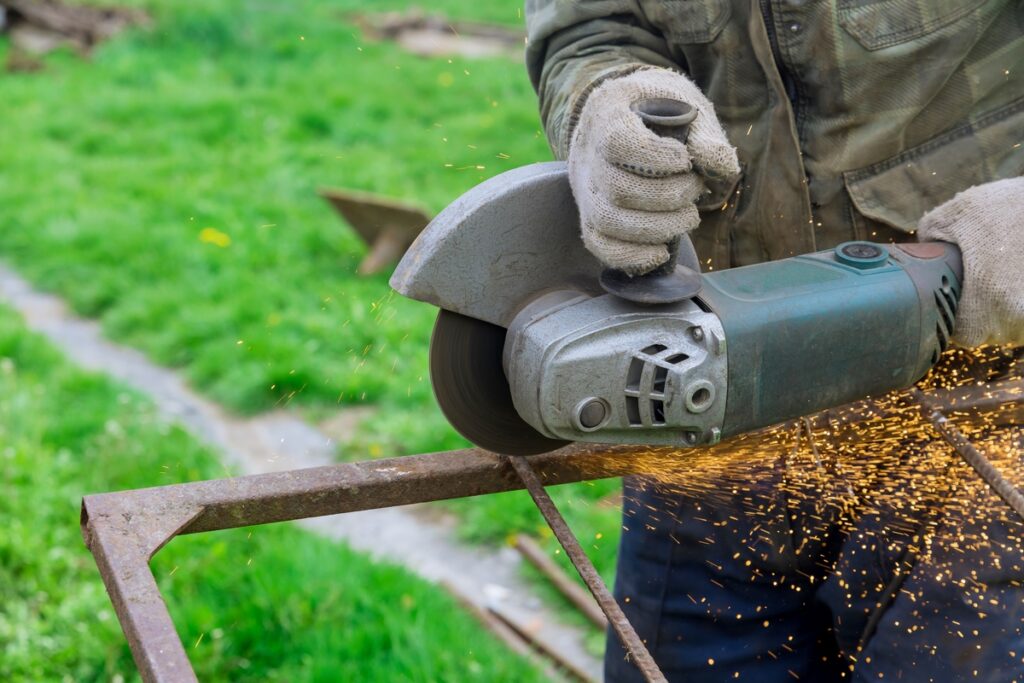Steel angle is a cornerstone in construction materials, with its unmistakable L-shape being its signature characteristic. Formed by meticulously bending a single piece of steel, it boasts precision in its design, allowing both legs to be either of equal length or intentionally varied based on the project’s specific demands. This unique configuration has made it an invaluable asset in architecture and construction.
The robust 90-degree angle that defines steel angle offers an unparalleled blend of strength and stability; a feature few other structural shapes can match. This balance of aesthetics and functionality, marked by its streamlined appearance and clean lines, ensures that it is not only used for its structural merits but also often selected for the visual appeal it brings to architectural designs. Its versatility is evident whether hidden behind the scenes or showcased as a design element.
Material Properties of Steel Angle
Strength and Durability
Steel angle is renowned for its exceptional strength, making it a top choice for numerous structural applications. The molecular composition of steel, combined with its L-shaped configuration, contributes to its ability to bear substantial loads and resist deformation. This inherent strength ensures a prolonged lifespan for structures and components that utilize this, thus offering both short-term resilience and long-term durability.
Resistance to Corrosion
One of the noteworthy attributes is its ability to resist corrosion, especially when treated or coated with protective layers. This resistance is particularly valuable in environments where the material is exposed to moisture, chemicals, or saline conditions. By preventing rust and corrosion, the integrity and appearance of the components remain uncompromised, making it ideal for indoor and outdoor applications.
Flexibility and Adaptability
Steel angle offers remarkable flexibility and adaptability beyond its strength and resistance to wear. Its design can suit various applications despite being a rigid material. From varying its lengths and thicknesses to bending it into specific angles other than the standard 90 degrees, it can be tailored to meet the unique requirements of different projects. This adaptability ensures that architects and engineers can innovate and optimize designs using this versatile material.

Architectural and Structural Uses
Building Frames and Foundations
Steel angle plays a pivotal role in constructing building frames and foundations. Due to its remarkable strength-to-weight ratio, it provides the necessary support without adding excessive weight. When incorporated into foundations, steel angle ensures stability by distributing loads evenly and resisting the forces that could cause structural shifts or settlements. The material’s precision and uniformity make it ideal for creating consistent, reliable frames that form the backbone of large and small buildings.
Bridges and Flyovers
Bridges and flyovers, by their very nature, require materials that can withstand variable and dynamic loads. With its robust nature, steel angle becomes an indispensable material in construction. Its resistance to bending and torsional forces makes it apt for these structures that span vast distances and bear the weight of vehicles, environmental factors, and sometimes even trains. The modularity also allows for efficient assembly and maintenance of these critical infrastructures, ensuring safety and longevity.
Roof Trusses and Support Beams
Regarding roofs, materials that offer both support and flexibility are paramount. Steel angle meets this need perfectly. Used in roof trusses, it provides the required rigidity while allowing design variations to accommodate different architectural styles and functional needs. It can span long distances without sagging, making it a preferred choice for support beams. As these beams often bear the weight of the roof and sometimes additional floors, steel angle’s consistent strength and reliability become even more valuable.
Industrial Applications
Equipment Frames and Protective Corners
In industrial settings, machinery and equipment often undergo rigorous operations, demanding materials to uphold these conditions. Steel angle, known for its resilience, is widely used to frame such equipment. Its L-shaped design offers additional reinforcement at corners, safeguarding equipment against accidental impacts and wear over time. Protective corners, fashioned from steel angle, shield equipment, and workers, reduce potential damage, and enhance industrial safety.
Conveyor Systems and Machinery Supports
Conveyor systems are integral to many industries transporting goods, raw materials, and finished products. Steel angle’s strength and adaptability make it the preferred material for constructing these systems. Its ability to maintain structural integrity over long spans ensures that conveyor belts run smoothly and consistently. Additionally, machinery often requires sturdy supports to remain stable during operations. Steel angle, with its robustness and ability to bear heavy loads, offers these machines foundational strength, ensuring their optimal performance and longevity.
Racks and Shelving Units
Storage solutions in industrial settings demand durability and efficient space utilization. Racks and shelving units constructed from steel angle offer both. The material’s inherent strength allows these storage units to bear heavy items without buckling or deforming. Its modular nature also enables customization, allowing industries to tailor storage solutions to their needs. Furthermore, steel angle’s resistance to wear and corrosion ensures that these racks and shelves remain in good condition, even in environments that may be harsh or laden with chemicals.

Residential and Decorative Uses
Furniture Designs: Tables, Chairs, and Bed Frames
In residential spaces, the blend of function and aesthetics is often sought after. Steel angle finds its way into many furniture designs, adding strength and a modern appeal. Tables and chairs that utilize steel angle benefit from its durability, ensuring they can support weight and endure daily use without compromise. Bed frames, especially those with contemporary designs, often incorporate steel angles to provide a sturdy foundation while achieving a minimalist and sleek appearance.
Garden and Landscape Edging
Steel angle offers a neat and durable solution for garden and landscape edging. Its clear, straight lines provide a definitive boundary between different garden sections, such as flower beds, walkways, or lawns. The material’s resistance to the elements ensures that these edges remain sharp and well-defined, even amidst changing weather conditions. Beyond its functional role, steel angle edging also adds a touch of modernity and structure to outdoor spaces, creating a pleasing visual contrast with the organic shapes of nature.
Decorative Trims and Accent Pieces
The versatility of steel angle isn’t limited to large structural components. It’s also widely used to create decorative trims and accent pieces for interiors and exteriors. Its L-shape provides depth and dimension, adding character to walls, doorways, and other architectural elements. When used as trim, it can create visually striking patterns or frames, elevating the overall design of a space. Moreover, due to its ability to be painted or finished in various ways, steel angles can be adapted to match or contrast with existing decor, making it a favorite among designers and homeowners alike.
Transportation and Automotive
Vehicle Frames and Body Reinforcements
In the transportation sector, the safety and durability of vehicles are paramount. Steel angle, known for its resilience and strength, is frequently used in constructing vehicle frames and body reinforcements. These frames serve as the skeletal structure of vehicles, bearing the weight of the entire assembly and withstanding external forces during motion. Conversely, reinforcements enhance the structural integrity of vehicles, especially in areas prone to impact. By utilizing steel angles, manufacturers ensure vehicles have a prolonged operational life and offer passengers enhanced safety.
Railways and Train Infrastructure
Railways represent one of the most extensive transportation networks globally, necessitating materials that can endure constant wear and heavy loads. Steel angle proves to be an invaluable asset in this context. It is used to construct railway bridges, overhead signal structures, and platform canopies. The material’s ability to resist bending and torsional forces ensures that these infrastructures remain stable and durable, even under the immense weight of passing trains and changing environmental conditions. Additionally, its modularity aids in efficiently assembling and maintaining these vital transport arteries.
Shipbuilding and Maritime Applications
The maritime industry, characterized by its challenging environment, demands materials that can withstand both the corrosive effects of saltwater and the immense pressures of deep-sea operations. Steel angle, often treated or coated to further enhance corrosion resistance, is preferred in shipbuilding. It’s used to construct ship hulls, decks, and support structures, ensuring that vessels remain seaworthy and durable throughout their service life. Beyond shipbuilding, steel angle also finds applications in the construction of docks, piers, and other maritime infrastructures, standing as a testament to its versatility and reliability in diverse conditions.

Miscellaneous Applications
Farming Equipment and Fencing
Agriculture, one of the oldest industries, has evolved, incorporating modern materials and techniques for enhanced efficiency. Steel angle has found its place in this evolution. Utilized in the construction of farming equipment, it ensures durability and resilience against the rigorous demands of agricultural operations. Whether it’s plows, harrows, or tractors, the strength of steel angle contributes to their longevity. Additionally, fencing made from steel angles provides a robust boundary for farmlands, protecting crops from animals and other external factors. Its durability means these fences stand firm, season after season, with minimal maintenance.
Playground Equipment
Safety and durability are top concerns when it comes to playground equipment. With its strength and adaptability, steel angle is ideal for constructing swings, slides, climbing structures, and more. Its ability to support weight ensures the equipment remains stable, even with multiple children playing simultaneously. Moreover, its resistance to wear and corrosion means that playground structures made from steel angle can withstand varying weather conditions, providing fun and safe play environments for years.
Utility Poles and Transmission Towers
A vast network of utility poles and transmission towers supports the modern world’s electrical and communication needs. Steel angle is often employed in the construction of these critical infrastructures. Its strength-to-weight ratio allows these towers and poles to carry heavy cables and equipment without buckling. Furthermore, the material’s resistance to environmental factors ensures that these structures remain erect and functional, even in adverse weather conditions. Utility companies use steel angles to ensure uninterrupted services, laying the foundation for modern urban and rural life.
Advantages of Steel Angle
Durability and Strength
One of the standout benefits of steel angle is its remarkable durability and strength. The molecular composition of steel, combined with the reinforced L-shape design, allows it to resist substantial loads, impacts, and daily wear. This makes steel angle an attractive choice for applications where longevity and resilience are needed. Structures and components made from steel angles can often withstand the test of time, with reduced risk of deformation or failure, ensuring that investments in such materials offer long-term returns.
Cost-effectiveness
Beyond its physical attributes, steel angle also offers financial advantages. Its production is often more cost-effective than other materials with similar strength properties. This economic efficiency extends to its installation and maintenance, as its durability means fewer replacements and repairs over time. Furthermore, steel angle’s recyclability can contribute to cost savings in the long run, as recycled steel often incurs lower production costs than new steel. For businesses and individuals alike, choosing steel angle often means getting a balance of quality and affordability.
Wide Range of Sizes and Thicknesses Available
The vast array of sizes and thicknesses available in the market further accentuates the adaptability of steel angles. This range ensures that specific requirements, be it for large structural projects or intricate decorative work, can be met precisely. The availability of diverse dimensions allows architects, engineers, and designers the flexibility to optimize their designs without being restricted by material limitations. Whether it’s a massive bridge construction or a sleek furniture design, steel angle’s varied sizes and thicknesses make it a go-to material for many applications.

Sustainability and Recycling
Steel’s Recyclability and its Contribution to Sustainability
Steel stands out as one of the most recyclable materials on the planet. Its inherent properties remain largely unchanged, regardless of how often it’s recycled. This means old steel products, including steel angle, can be repurposed into new steel without compromising quality. Recycling steel reduces the need for raw materials and consumes less energy than producing new steel. Consequently, steel production’s carbon footprint and environmental impact are significantly reduced. This recyclability positions steel angle as a material that aligns with sustainability goals, making it a preferred choice for eco-conscious projects.
The Role of Steel Angle in Green Construction
Green construction emphasizes the use of resources, reducing the overall environmental impact. Steel Angle fits seamlessly into this philosophy with its recyclable nature and long lifespan. Its durability means structures with steel angles require less frequent repairs or replacements, reducing resource consumption. Moreover, given its strength, smaller quantities of steel angle can be used to achieve the same structural integrity as bulkier materials, promoting efficient resource utilization. Many green building certifications recognize the benefits of using recyclable materials like steel angle, further cementing its role in sustainable construction practices.
Stealing the Spotlight: Core Insights on Steel Angle’s Multifaceted Impact
An unsung hero in the architectural and industrial world, Steel Angle seamlessly interweaves itself into diverse applications, showcasing its unmatched versatility. Its remarkable synthesis of robust strength and adaptability means that from towering skyscrapers to intricate furniture designs, steel angle stands as a backbone. Yet, its significance doesn’t stop at mere structural roles. In an era leaning towards environmental consciousness, Steel Angle’s recyclability propels it to the forefront, heralding a sustainable approach in construction and design. Every beam, edge, and frame emphasizes a commitment to enduring structures and a greener tomorrow.

FAQ: Unraveling the Angles of Steel Angle
What is Steel Angle?
Steel angle is a structural steel shaped like an “L.” It is formed by bending a single piece of steel at a 90-degree angle, and it’s used in various applications across industries due to its strength and stability.
Why is the L-shape Significant in Steel Angle?
The L-shape offers additional reinforcement, making steel angle especially resistant to bending and torsional forces. This shape provides strength and stability, making it ideal for various structural applications.
In What Applications is Steel Angle Most Commonly Used?
Steel angle is versatile, finding use in architectural structures like buildings and bridges, industrial applications such as machinery frames, residential uses like furniture, and even in transportation, including vehicle frames and shipbuilding.
Can Steel Angle Resist Corrosion?
Yes, especially when treated or coated with protective layers, steel angle can effectively resist corrosion, making it suitable for indoor and outdoor applications.
Is Steel Angle Cost-effective Compared to Other Construction Materials?
It is often a cost-effective choice due to its durability, which leads to fewer replacements and repairs. Its recyclability can also contribute to cost savings in the long run.
Can the Size and Thickness of the Steel Angle Be Customized?
Absolutely! They are available in various sizes and thicknesses, allowing them to be tailored to specific project requirements.
Reference
Steel Angle in Architectural Structures
Green Practices in Construction

